Creative Biz

Describe Thunder in Creative Writing: A Comprehensive Guide
How to describe thunder in creative writing – Prepare to unleash the thunder’s roar in your writing! Discover the secrets of crafting thunderous descriptions that will leave readers trembling with awe. Explore a symphony of techniques to capture the thunder’s might, from sensory overload to emotive language and cultural perspectives.
In this comprehensive guide, we’ll navigate the elements of thunder description, empowering you to evoke the storm’s fury and leave an unforgettable mark on your readers.
Sensory Descriptions
To effectively convey the impact of thunder in creative writing, it is crucial to engage the reader’s senses and evoke an emotional response. This can be achieved through vivid descriptions of the sound’s loudness, reverberations, and emotional resonance.
Loudness and Intensity
- Describe the thunder as “earsplitting,” “deafening,” or “shattering,” emphasizing its overwhelming volume.
- Use words like “roar,” “boom,” or “crack” to convey the specific character of the sound.
- Compare the thunder to other loud natural phenomena, such as “a crashing wave” or “an erupting volcano.”
Reverberations and Vibrations
- Convey the physical impact of the thunder by describing the “tremors” or “vibrations” it sends through the ground and air.
- Use words like “reverberate,” “echo,” or “resonate” to capture the lingering effects of the sound.
- Describe the “shockwaves” or “pressure waves” that radiate outward from the source of the thunder.
Emotional Impact
- Explore the emotional impact of the thunder, such as fear, awe, or even exhilaration.
- Use words like “terrifying,” “majestic,” or “invigorating” to convey the subjective experience of the sound.
- Describe the thunder as a “harbinger of storms” or a “reminder of nature’s power.”
Metaphorical Comparisons
Thunder is a powerful force of nature, and writers can use metaphorical comparisons to capture its awe-inspiring presence. By comparing thunder to other natural phenomena, mythological creatures, or human qualities, writers can evoke a range of emotions and create a vivid impression of this celestial spectacle.
Explosions and Roars
Thunder can be likened to an explosion, with its sudden and deafening impact. Writers can describe the thunder as “exploding” or “detonating,” creating an image of immense force and destruction. Similarly, thunder can be compared to the roar of a lion or a bear, conveying its animalistic power and primal energy.
Mythological Creatures
Thunder has often been associated with mythological creatures, such as giants or gods. Writers can draw parallels between thunder and these legendary beings, suggesting that the thunder is the voice of an angry god or the footsteps of a towering giant.
Such comparisons add a sense of grandeur and mythology to the description of thunder.
Awe and Terror
Thunder can evoke a range of emotions, from awe to terror. Writers can use metaphors to convey these emotions, describing the thunder as “majestic” or “terrifying.” They can also use personification to give the thunder human-like qualities, such as anger or wrath, intensifying its emotional impact.
Personification
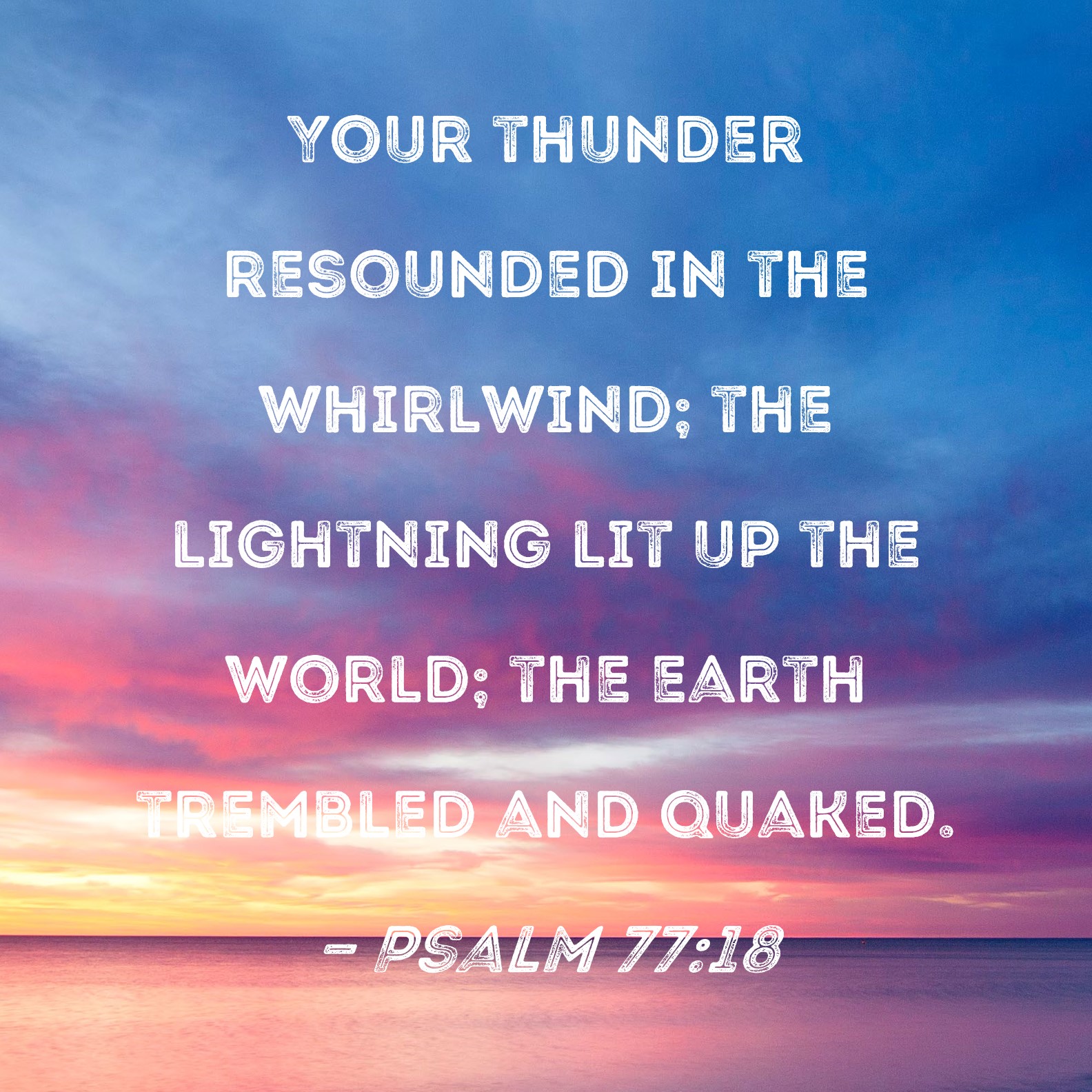
When we personify thunder, we give it human-like qualities, such as anger, joy, or sorrow. We describe it as a force of nature that has a will or purpose. By creating a dialogue or narrative involving the thunder, we can bring it to life and make it a more engaging and memorable part of our writing.
Giving Thunder Human-like Qualities
- Describe the thunder as having a booming voice that shakes the ground.
- Give the thunder a personality, such as being angry, joyful, or sorrowful.
- Use figurative language to compare the thunder to a human emotion, such as “the thunder roared with anger” or “the thunder wept with sorrow.”
Describing Thunder as a Force of Nature with a Will or Purpose
- Describe the thunder as a force of nature that has a purpose, such as to punish the wicked or to protect the innocent.
- Give the thunder a sense of agency, such as by describing it as “striking down” or “protecting” something.
- Use figurative language to compare the thunder to a force of nature, such as “the thunder was like a bolt of lightning” or “the thunder was like a tidal wave.”
Creating a Dialogue or Narrative Involving the Thunder
- Have the thunder speak to a character in the story.
- Describe the thunder as interacting with the environment, such as by shaking the ground or causing trees to sway.
- Use the thunder to create a sense of atmosphere or mood, such as by creating a sense of fear or awe.
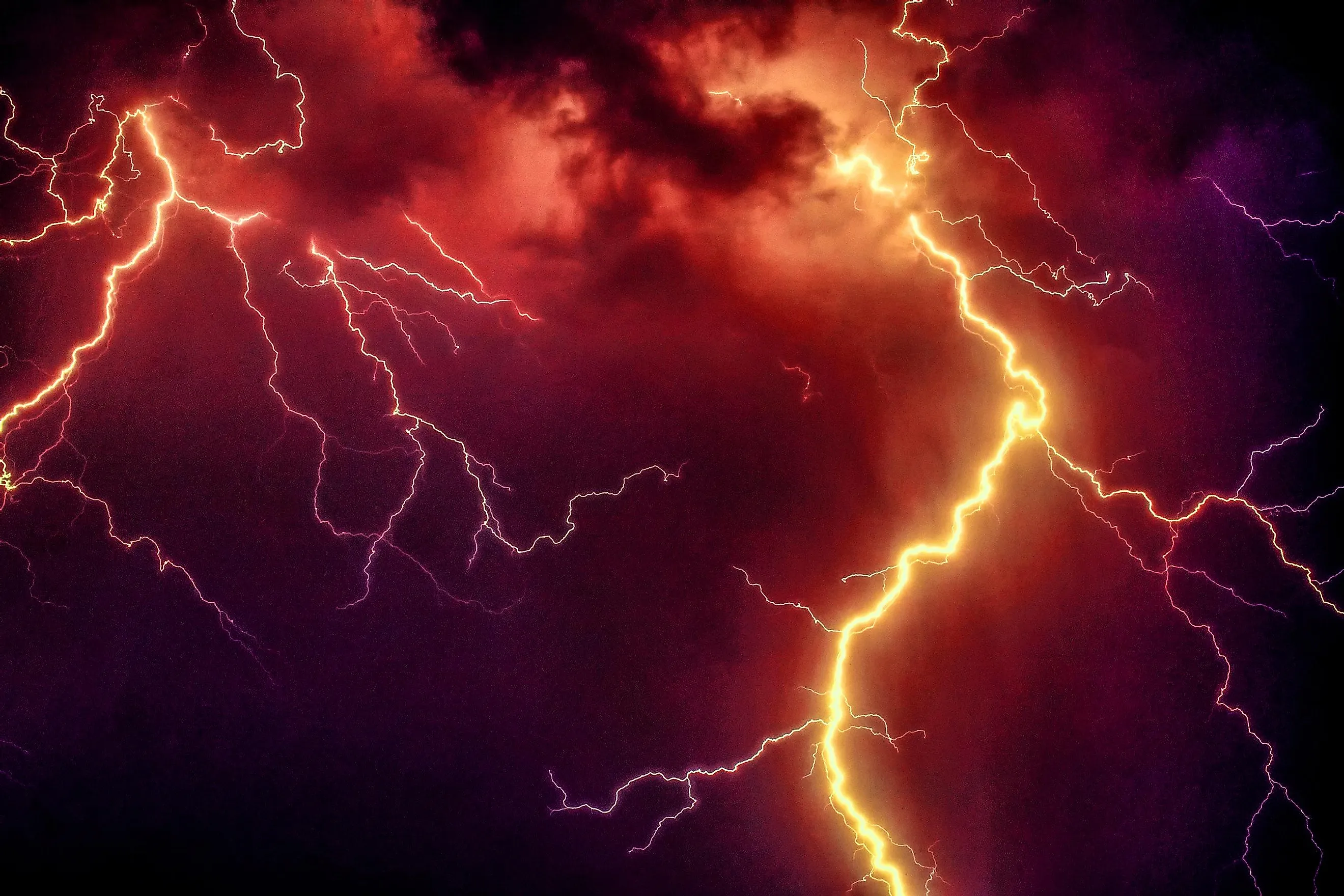
Thunder, with its deafening roar and imposing presence, has long been associated with profound symbolism in literature. It embodies raw power, authority, and the divine.
Thunder can foreshadow impending events or mirror the emotional turmoil of characters. Its ominous rumble may herald an approaching storm, a looming danger, or a significant turning point in the narrative.
Moreover, thunder can reflect the inner turmoil of characters, amplifying their anger, fear, or anticipation. Its deafening presence can mirror the chaos and turmoil within their souls.
To enhance the depth of your writing, explore the symbolic meanings associated with thunder:
- Power and Authority: Thunder’s deafening roar symbolizes the raw power of nature, authority figures, or divine intervention.
- Divine Intervention: In many cultures, thunder is associated with the wrath or favor of gods, representing divine intervention or judgment.
- Chaos and Disruption: Thunder’s sudden and unpredictable nature can symbolize chaos, disruption, or the shattering of established order.
- Emotional Intensity: The emotional impact of thunder can mirror the intensity of emotions experienced by characters, such as anger, fear, or anticipation.
Table of Thunder Symbols:
Onomatopoeia
Incorporating onomatopoeic words into your writing can effectively mimic the sound of thunder, enhancing the sensory experience for your readers. Words like “boom,” “crash,” or “rumble” evoke an immediate and visceral response, transporting the reader into the heart of the storm.
Experimentation with Onomatopoeia
Experiment with different combinations of onomatopoeic words to convey the nuances of the thunder. For instance, a sudden and explosive clap could be described as a “thunderous boom,” while a prolonged and rumbling sound might be depicted as a “distant rumble.” By carefully selecting and arranging these words, you can create a vivid and dynamic portrayal of the thunder’s presence.
Descriptive Language

To effectively describe thunder in creative writing, employ vivid adjectives and adverbs to craft a detailed sensory picture. Describe its color, shape, and movement, appealing to multiple senses for a multisensory experience. Utilize similes and metaphors to enhance the imagery and make the description more impactful.
Color, Shape, and Movement
- Color: Describe the thunder’s color as “slate gray,” “inky black,” or “fiery orange” depending on the context.
- Shape: Depict the thunder as “jagged bolts,” “exploding orbs,” or “serpentine streaks” to convey its dynamic nature.
- Movement: Describe the thunder as “crashing,” “rolling,” or “pealing” to capture its varied movements through the sky.
Rhythm and Cadence

Rhythm and cadence play a crucial role in capturing the intensity and duration of thunder in creative writing. By varying the rhythm and cadence of your writing, you can convey the suddenness of a thunderclap, the sustained roar of thunder, and the continuous movement and energy associated with the phenomenon.
Short, Staccato Sentences
Short, staccato sentences can effectively convey the suddenness and impact of a thunderclap. These sentences are characterized by their brevity and sharp, abrupt rhythm. For example:
- “A sharp crack split the sky.”
- “The thunder boomed, a sudden explosion.”
Long, Rolling Sentences
Long, rolling sentences can capture the sustained roar of thunder. These sentences are characterized by their length and smooth, flowing rhythm. For example:
- “The thunder roared like a beast, its rumble reverberating through the air.”
- “The thunder crashed and rolled, a relentless symphony of sound.”
Enjambment is a technique where a sentence continues onto the next line without a pause. This technique can create a sense of continuous movement and energy, which is particularly effective in describing the relentless nature of thunder. For example:
- “The thunder crashed, / Rolling through the heavens, / A relentless symphony.”
- “The thunder roared, / Its echoes chasing each other / Across the vast expanse.”
Pauses and Caesurae
Pauses and caesurae are techniques that involve deliberately breaking up the flow of your writing. Pauses can be indicated by commas, dashes, or line breaks, while caesurae are more pronounced pauses that occur within a line of poetry. These techniques can be used to emphasize key moments or create tension.
For example:
- “The thunder paused, / A moment of silence, / Then the roar resumed with even greater force.”
- “The thunder crashed— / A deafening explosion / That shook the earth.”
By utilizing these techniques, you can effectively convey the rhythm and cadence of thunder in your creative writing, adding depth and authenticity to your descriptions.
Contrast and Comparison
Contrast and comparison are powerful techniques that can be used to create a vivid and memorable description of thunder. By contrasting the sound of thunder with other sounds in the environment, you can create a sense of perspective and emphasis.
You can also compare different types of thunder, such as a distant rumble versus a deafening clap, to highlight their unique qualities.
Contrasting Thunder with Other Sounds
- Thunder can be contrasted with the gentle patter of rain, the howling of the wind, or the chirping of birds.
- By comparing the loud, sudden sound of thunder to these more subtle sounds, you can create a sense of contrast that makes the thunder seem even more powerful and awe-inspiring.
Comparing Different Types of Thunder
- Not all thunder is created equal. Some thunderclaps are distant rumbles that can be heard for miles, while others are deafening explosions that can shake the ground beneath your feet.
- By comparing different types of thunder, you can create a sense of perspective and emphasis. For example, you could describe the distant rumble of thunder as a gentle warning, while the deafening clap of thunder could be described as a powerful and destructive force.
Sensory Overload
Being caught in a thunderstorm is an overwhelming sensory experience. The thunderclaps are deafening, the lightning flashes are blinding, and the rain pours down in sheets. It can be difficult to orient oneself in such a chaotic environment.
The disorienting effects of a thunderstorm can be both frightening and exhilarating. The sudden changes in light and sound can make it difficult to see and hear, and the torrential rain can make it difficult to breathe. However, there is also a sense of awe and wonder that comes from witnessing the sheer power of nature.
The Power of Nature
Thunderstorms are a reminder of the power of nature. They can be destructive, but they can also be beautiful. The thunderclaps are a testament to the strength of the storm, and the lightning flashes are a reminder of the beauty of nature.
The rain is a symbol of life and renewal.
Emotive Language

When describing thunder, emotive language can powerfully convey the emotional impact it evokes. Whether it’s fear, excitement, or awe, thunder’s emotional resonance can be captured through descriptive language.
Metaphors and Similes
Use metaphors and similes to create vivid and impactful descriptions. For instance, describe thunder as a “celestial drumbeat,” evoking a sense of rhythm and power, or compare its sound to “a thousand cannons firing simultaneously,” conveying its deafening intensity.
Cultural and Historical Perspectives
Thunder, a phenomenon both awe-inspiring and enigmatic, has held a profound significance across cultures and throughout history. From ancient myths and legends to contemporary art and literature, thunder has served as a symbol of power, fear, and even divinity.
Myths and Legends
In many ancient cultures, thunder was attributed to the wrath of a powerful deity. For instance, in Greek mythology, Zeus hurled thunderbolts as a weapon, while in Norse mythology, Thor wielded the mighty hammer Mjölnir, which caused thunder with each strike.
Literature and Art
Throughout history, thunder has been a recurring theme in literature and art. In Shakespeare’s plays, thunder often signifies impending doom or a shift in fortune. In Romantic poetry, such as William Blake’s “Auguries of Innocence,” thunder is associated with both awe and terror.
In music, thunder has inspired countless compositions. From the dramatic overture of Beethoven’s “Symphony No. 6” to the haunting soundscapes of Pink Floyd’s “Echoes,” thunder has provided a powerful and evocative element for musicians of all eras.
Scientific Explanation
Thunder is a loud crashing sound that occurs during a thunderstorm. It is caused by the rapid heating and expansion of air around a lightning strike.
Lightning and Thunder
When lightning strikes the ground, it creates a channel of extremely hot air. This hot air expands rapidly, creating a shock wave that travels through the air at supersonic speeds. This shock wave is what we hear as thunder.

Air Pressure and Sound Waves
The rapid expansion of air around the lightning strike creates a sudden change in air pressure. This change in pressure creates sound waves that travel through the air. The sound waves are what we hear as thunder.
Table: Key Steps in Thunder Creation, How to describe thunder in creative writing
| Step | Description ||—|—|| Lightning strike | Lightning strikes the ground, creating a channel of hot air. || Rapid air expansion | The hot air expands rapidly, creating a shock wave. || Shock wave | The shock wave travels through the air at supersonic speeds.
|| Change in air pressure | The shock wave creates a sudden change in air pressure. || Sound waves | The change in air pressure creates sound waves that travel through the air. |
Example: Thunderclap
A thunderclap is a loud, sudden burst of thunder. It is caused by a particularly strong lightning strike. The sound waves from a thunderclap can travel for many miles.The physics behind a thunderclap is the same as the physics behind any other type of thunder.
However, the strength of the lightning strike and the proximity of the observer to the strike can make a thunderclap particularly loud.
Table of Thunder Descriptions
The following table categorizes different types of thunder descriptions based on their literary devices:
Timeline of Thunder Events

Thunderstorms are a powerful display of nature’s force, characterized by intense electrical activity, heavy rainfall, and strong winds. Understanding the sequence of events during a thunderstorm can help us appreciate the magnitude and dynamics of this natural phenomenon.
Lightning Strike
The initial event in a thunderstorm is a lightning strike, a sudden and massive electrical discharge between clouds, between a cloud and the ground, or between the ground and a cloud. The lightning strike is the most dangerous aspect of a thunderstorm, as it carries an enormous amount of electrical energy that can cause severe injuries or even death.
Thunderclap
The thunderclap, a loud and sudden explosive sound, occurs as a result of the rapid expansion of air around the lightning channel. The heated air expands outward at supersonic speeds, creating a shock wave that travels through the atmosphere. The time interval between the lightning strike and the thunderclap depends on the distance from the observer to the lightning strike.
The farther the observer is from the strike, the longer it takes for the sound to reach them. Typically, the thunderclap is heard within 1-10 seconds after the lightning strike.
After the lightning strike and thunderclap, rain typically begins to fall. The rain is caused by the condensation of water vapor in the clouds. As the air in the clouds cools, the water vapor condenses into tiny water droplets that become too heavy to stay suspended in the air and fall as rain.
The time interval between the thunderclap and the onset of rain can vary from 1-5 minutes, depending on the size and intensity of the thunderstorm.
Strong winds are often associated with thunderstorms. These winds are caused by the movement of air masses within the thunderstorm. The rising and falling air currents create areas of high and low pressure, which in turn generate winds. The wind speeds in a thunderstorm can vary greatly, from a gentle breeze to damaging gusts.
The time interval between the onset of rain and the arrival of strong winds can vary from 5-15 minutes, depending on the severity of the thunderstorm.By understanding the timeline of events during a thunderstorm, we can better appreciate the dynamics of this powerful weather phenomenon and take appropriate precautions to stay safe during a thunderstorm.
– Thunder Symbolism in Poetry
Thunder has captivated poets throughout history, serving as a potent symbol of both awe and terror.
Symbol of Power and Wrath
Thunder is often associated with the wrath of God or other divine forces, representing their power and authority. For example, in William Blake’s “Auguries of Innocence,” thunder accompanies the voice of God, conveying his anger and judgment:
“The roaring of lions, the howling of wolves,The raging of the stormy sea,And the thunder of tempests, are all his voice.”
Symbol of Change and Transformation
Thunder can also symbolize change and transformation. In T.S. Eliot’s “The Waste Land,” thunder marks a moment of epiphany and renewal:
“I heard the thunder afar off and I was filled with joy.”
Symbol of Nature’s Indifference
In some poems, thunder represents the indifference of nature to human suffering. In Emily Dickinson’s “Because I could not stop for Death,” thunder accompanies the carriage ride to the speaker’s grave, emphasizing the inevitability and impersonality of death:
“We passed the School, where Children stroveAt Recess in the Ring We passed the Fields of Gazing GrainWe passed the Setting SunOr rather He passed Us The Dews drew quivering and chillFor only Gossamer, my GownMy Tippet only Tulle.”
FAQ Section: How To Describe Thunder In Creative Writing
How do I convey the intensity of thunder?
Describe the deafening roar that shakes the earth, the reverberations that ripple through the air, and the echoes that linger long after the thunderclap.
What metaphorical comparisons can I use to describe thunder?
Compare thunder to a roaring lion, a crashing giant, or a celestial symphony, evoking a sense of awe, fear, or wonder.
How can I use onomatopoeia to capture the sound of thunder?
Incorporate words like “boom,” “crash,” and “rumble” to mimic the thunder’s thunderous impact, creating a vivid sensory experience for readers.
What cultural perspectives on thunder can I explore?
Discuss the role of thunder in mythology, folklore, and different cultures, examining its association with power, divine intervention, or natural phenomena.
How do I use rhythm and cadence to enhance my thunder description?
Vary sentence length and structure to reflect the thunder’s intensity, using short, staccato sentences for sudden claps and longer, rolling sentences for sustained roars.

20 of the Best Words to Describe a Storm in Writing
By: Author Hiuyan Lam
Posted on Last updated: October 20, 2023
Categories Vocabulary Boosters
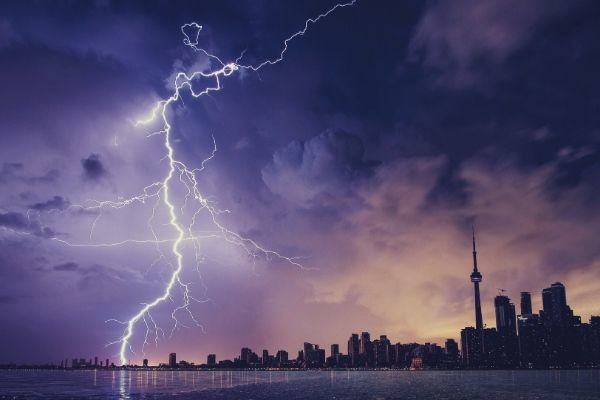
What’s great when searching for words to describe a storm, whether for a storm you are looking to write about in your novel or something else, is that there are endless possibilities.
Words to describe how a storm is can vary as there are different aspects you could focus on, and storms can occur in different places.
Here are some words to describe two different aspects of a storm and where one can take place.
The best words to describe a storm with lightning
Finding the right words to describe a storm with lightning is particularly hard as some people are afraid of it, whereas others think that it’s awesome, or both. Here are some words to describe a storm with lightning:
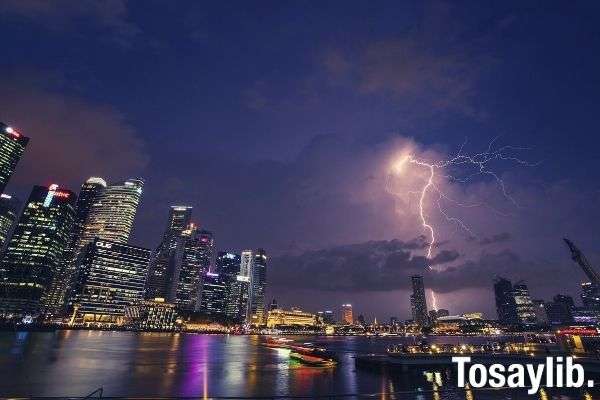
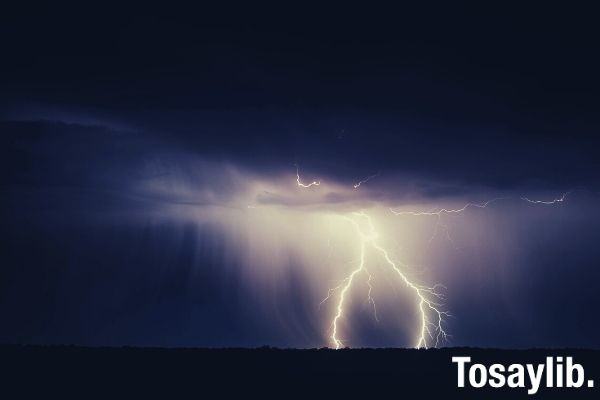
You May Also Like:
25 of the Best Words and Phrases to Describe Rain

Top words for describing the sound of thunder
When looking for words to describe a storm, don’t forget to consider those that describe the most distinct sound you will hear during one: thunder. There are many words to describe a storm with thunder and we have compiled the best of them below.
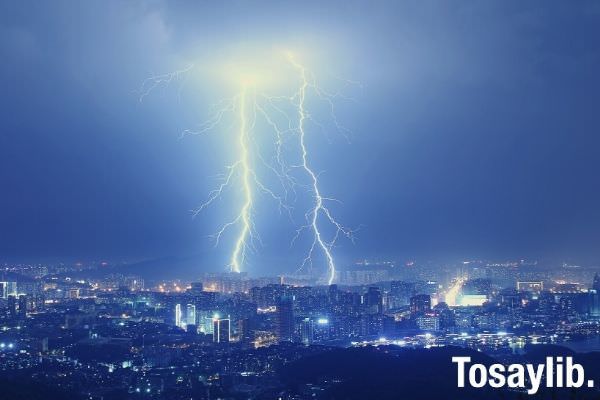
25 Perfect Words to Help Describe Your Pain and Suffering

The best words to describe a storm at sea
Sailors have seen their fair share of bad weather, so you need to think and feel as they would when using words to describe a storm. To get the best words to describe a storm at sea when you haven’t witnessed one, try to imagine what feelings sailors of old and modern times would share.
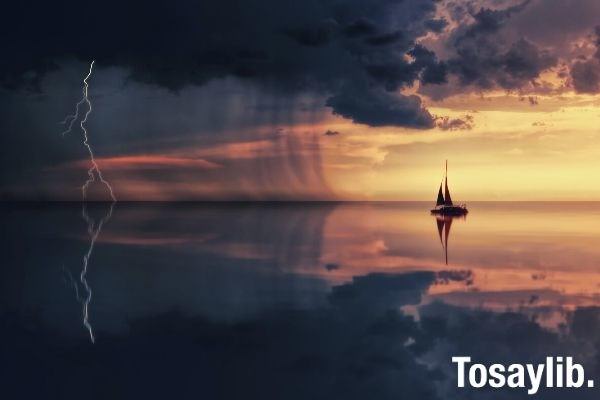
25 of the Best Words to Describe Heat and Hot Weather
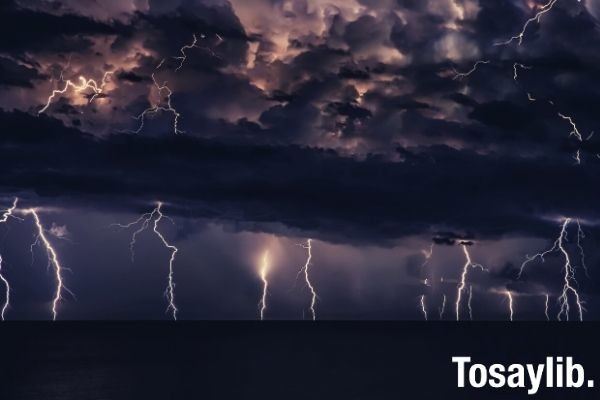
Storms are one of the most amazing weather occurrences when you consider how they have the power to build and destroy all in one watery bundle. We hope that you’ve found a few words to describe a storm that can accurately express how you felt during one.
- Conjunctions
- Prepositions
Describing Storms: Adjectives with Examples
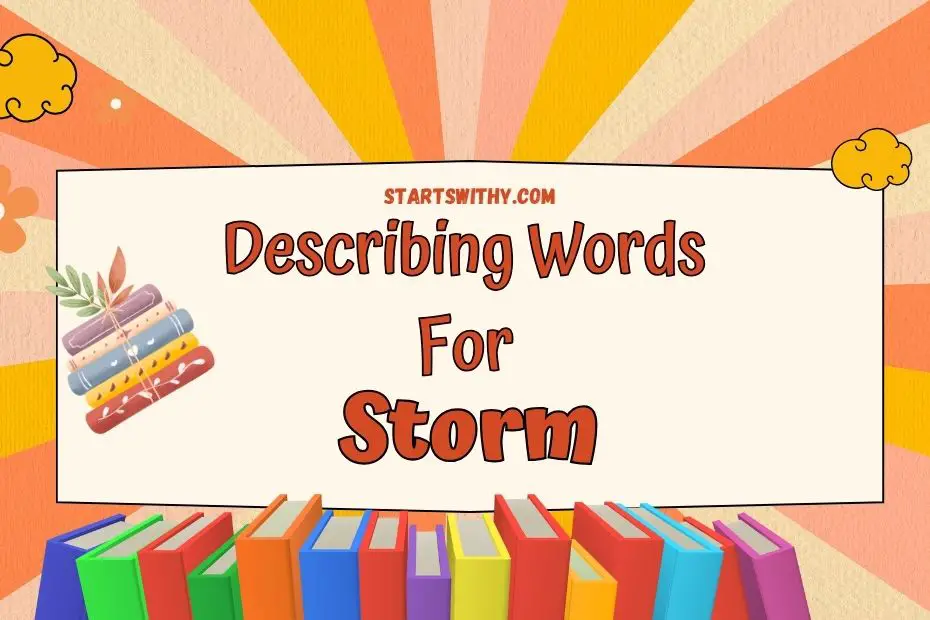
Hey there! Ever been caught in the midst of a raging storm? The thunder rumbling, the lightning crackling, and the rain pouring down in torrents. It’s a powerful and awe-inspiring experience, isn’t it? But have you ever wondered how to describe a storm using the perfect adjectives? Well, look no further! In this article, I’ll be sharing a list of adjectives that will help you vividly paint a picture of a storm in your writing. From words that capture the intensity of the storm to those that evoke the emotions it stirs, we’ve got you covered. So, let’s dive in and explore the world of adjectives for storms together!
Table of Contents
How to Describe storm? – Different Scenarios
When it comes to describing a storm, there are various scenarios that you may encounter. Each scenario requires a different set of words to vividly capture the essence of the storm and evoke the emotions it stirs. In this section, I will provide you with examples and adjectives that can help you paint a picture of a storm in different contexts.
1. Thunderstorm:
- Roaring : The thunderstorm was roaring, shaking the ground beneath us.
- Electrifying : The electrifying thunderstorm lit up the sky with flashes of lightning.
- Torrential : Drenched in the torrential downpour, we sought shelter from the thunderstorm.
- Frightening : The thunderstorm was so frightening that it sent chills down my spine.
- Powerful : The powerful gusts of wind accompanying the thunderstorm threatened to uproot trees.
2. Hurricane:
- Devastating : The hurricane left a trail of devastation in its wake, flattening houses and uprooting trees.
- Wreaking havoc : The hurricane was wreaking havoc, causing widespread destruction and chaos.
- Unpredictable : The path of the hurricane was unpredictable, making it difficult to know when and where it would strike.
- Fierce : The fierce winds of the hurricane howled through the night, rattling windows and doors.
3. Tornado:
- Twisting : The tornado was a twisting force of nature, tearing through everything in its path.
- Whirling : The whirling tornado created a deafening sound as it approached.
- Destructive : The destructive tornado ripped roofs off houses and tossed cars like toys.
- Terrifying : The sight of the tornado was terrifying, as it seemed like a monster devouring everything in its way.
- Blinding : The snowstorm created blinding conditions, making it nearly impossible to see.
- Freezing : The freezing temperatures during the snowstorm made us bundle up in layers to stay warm.
- Impenetrable : The snowstorm created an impenetrable wall of snow, blocking roads and causing travel disruptions.
- Peaceful : Despite the chaos it caused, there was a certain peacefulness to the snowstorm as everything was blanketed in white.
Describing Words for storm in English
When it comes to describing storms, it’s important to choose the right adjectives to paint a vivid picture in the reader’s mind. Whether it’s a thunderstorm, hurricane, tornado, or snowstorm, each type of storm carries its own specific characteristics. By using carefully selected adjectives, you can effectively convey the intensity and emotions associated with these weather phenomena. Let’s explore some describing words for storms in English:
Thunderstorms:
- Sound: Booming, crackling, deafening, percussive, electrifying
- Vision: Flashing, illuminating, ominous, dark, swirling clouds
- Intensity: Ferocious, raging, downpouring, torrential, volatile
- Emotion: Fearsome, awe-inspiring, exhilarating, cleansing, chaotic
Hurricanes:
- Power: Destructive, relentless, unstoppable, devastating, awe-inspiring
- Wind: Howling, screaming, whipping, ferocious, gale-force
- Rain: Torrential, relentless, blinding, sheets of, deluge
- Impact: Flood-inducing, catastrophic, widespread, crippling, paralyzing
- Movement: Twisting, swirling, churning, dancing, whipping
- Sound: Roaring, deafening, shrieking, howling, unearthly
- Destruction: Devastating, obliterating, leveling, pulverizing, merciless
- Fear: Terrifying, awe-inspiring, paralyzing, unsettling, ominous
Snowstorms:
- Vision: Blinding, whiteout, swirling, muffled, apocalyptic
- Sound: Eerie silence, muffled, howling wind, crunching snow
- Intensity: Blinding, relentless, heavy, blizzard-like, paralyzing
- Emotion: Peaceful, serene, isolating, magical, treacherous
Remember, when describing storms, choose adjectives that accurately capture the intensity, movement, and impact of the weather phenomenon. Use descriptive words that engage the reader’s senses and evoke emotions. By carefully selecting your adjectives, you can create a powerful and engaging description of a storm.
Adjectives for storm
Positive adjectives for storm with example sentences.
When describing storms, it’s important to choose adjectives that capture their intensity, movement, and impact. Here are some positive adjectives that can be used to depict storms:
- Powerful : The storm unleashed its powerful winds, shaking the trees and rattling the windows.
- Fierce : The fierce storm pounded the coast, causing massive waves to crash against the shoreline.
- Majestic : As I stood on the hilltop, I marveled at the majestic storm clouds rolling in.
- Impressive : The storm displayed its impressive lightning show, illuminating the darkened sky.
- Thrilling : Despite the chaos, there was a thrilling beauty to the storm’s wild fury.
- Energizing : The storm’s energy filled the air, charging the atmosphere with excitement.
- Enchanting : The storm’s enchanting winds whispered secrets to the dancing leaves.
- Invigorating : I felt invigorated as the storm’s rain washed away all my worries.
- Dramatic : The storm put on a dramatic performance, showcasing nature’s raw power.
- Breathtaking : The storm’s breathtaking display of lightning painted the sky with streaks of brilliance.
- Glorious : The storm’s arrival was greeted with a chorus of thunder, announcing its glorious presence.
- Mesmerizing : I was mesmerized by the storm’s swirling clouds, hypnotized by their fluid motion.
Negative Adjectives for Storm with Example Sentences
While storms can be captivating, they can also bring destruction and chaos. Here are some negative adjectives that reflect the more turbulent aspects of storms:
- Destructive : The storm wreaked havoc, leaving a path of destruction in its wake.
- Menacing : The dark, menacing storm clouds hung low in the sky, foreshadowing the impending chaos.
- Violent : The storm unleashed its violent fury, tearing through the town with relentless force.
- Terrifying : The storm’s howling winds and booming thunder were absolutely terrifying.
- Disruptive : The storm disrupted everyday life, causing power outages and road closures.
When using negative adjectives to describe storms, it’s important to remember the awe-inspiring power and beauty they possess while also acknowledging their potential for danger and damage.
By carefully selecting descriptive words, we can create powerful and engaging descriptions that evoke emotions and engage the reader’s senses when talking about storms. Whether it’s positive or negative, the right adjective can make all the difference in bringing the storm to life in our writing.
Synonyms and Antonyms with Example Sentences
Synonyms for storm:
Example sentences:
- The tempest tore through the town, uprooting trees and knocking down power lines.
- We were caught in a fierce gale while sailing, and it was quite a challenge to navigate the rough waters.
- The coastal regions were devastated by the powerful hurricane that struck last night.
- A massive tornado touched down in the countryside, leaving a trail of destruction behind.
- The sudden squall caught us off guard, drenching us in heavy rain within seconds.
- The cyclone approaching the island is expected to bring strong winds and heavy rains.
- Residents are advised to evacuate as the typhoon is predicted to make landfall soon.
Antonyms for storm:
- After the chaos of the storm, the sea returned to a calm state, with gentle waves lapping the shore.
- The lake looked serene under the clear blue sky, devoid of any hint of a storm.
- The air was still , without even a whisper of wind, creating a peaceful atmosphere.
- The forest was peaceful , with birds chirping and a gentle breeze rustling the leaves.
- The lake was so tranquil that it reflected the surrounding mountains like a mirror.
- The gentle rainfall provided a soothing sound, creating a tranquil ambiance.
Remember, when describing storms, the use of appropriate adjectives is essential in creating vivid imagery and engaging the reader’s senses. Whether you choose to depict the ferocity and power of a storm or the calm and tranquility after it has passed, selecting the right adjectives can greatly enhance your writing.
So whether you’re writing for young children or teaching them about storms, these synonyms and antonyms can help expand their vocabulary and understanding of different weather conditions.
Describing storms with the perfect adjectives is a crucial skill that can greatly enhance your writing. By carefully selecting words that accurately depict the intensity, movement, and impact of storms, you can create vivid and engaging descriptions.
Throughout this article, we have explored various synonyms and antonyms for the word “storm” and provided example sentences to illustrate their usage. These adjectives not only expand your vocabulary but also allow you to convey different weather conditions with precision.
In addition to accuracy, the right adjectives can evoke emotions and engage the reader’s senses. By choosing words that paint a vivid picture, you can transport your audience into the heart of the storm, making your writing more captivating and immersive.
Remember, the power of adjectives lies in their ability to bring your writing to life. So, the next time you find yourself describing a storm, be sure to select the perfect adjectives to create a truly impactful and memorable experience for your readers.
Related Posts
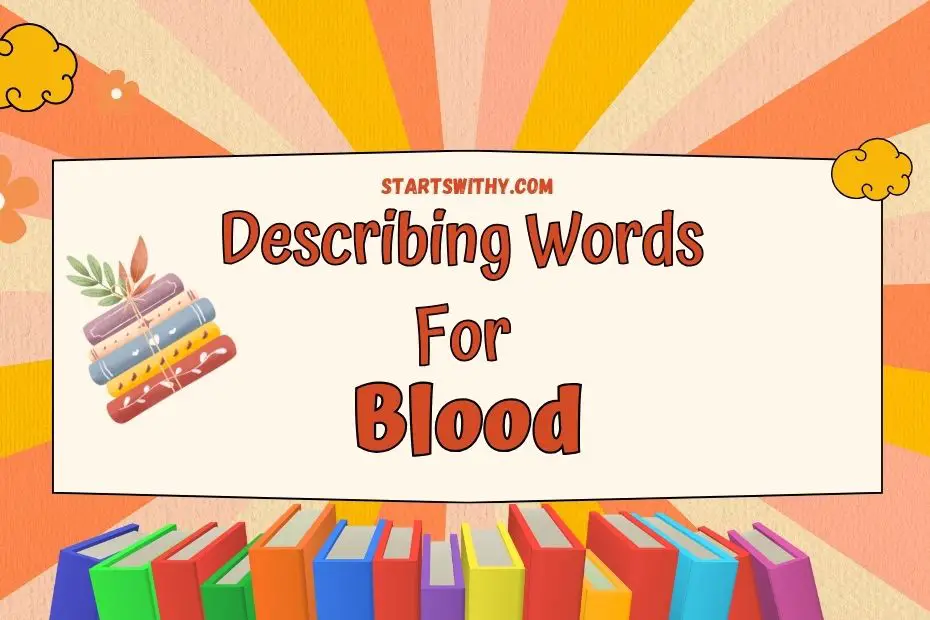
Describing Blood: Adjectives with Examples
Blood is a vital element of our existence, coursing through… Read More » Describing Blood: Adjectives with Examples
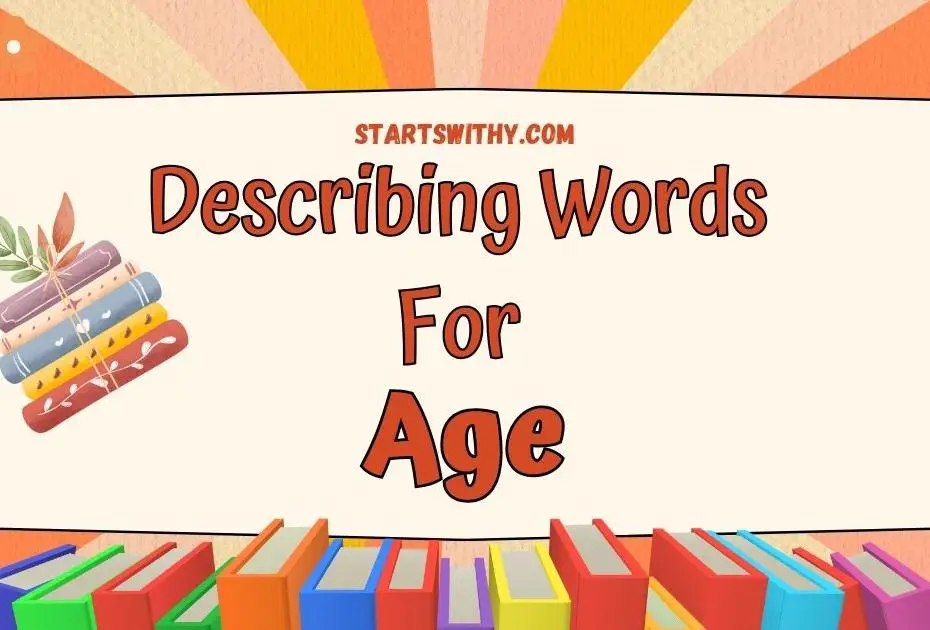
Adjectives for Age: Describing Words & Examples
As we navigate through life, one thing that remains constant… Read More » Adjectives for Age: Describing Words & Examples
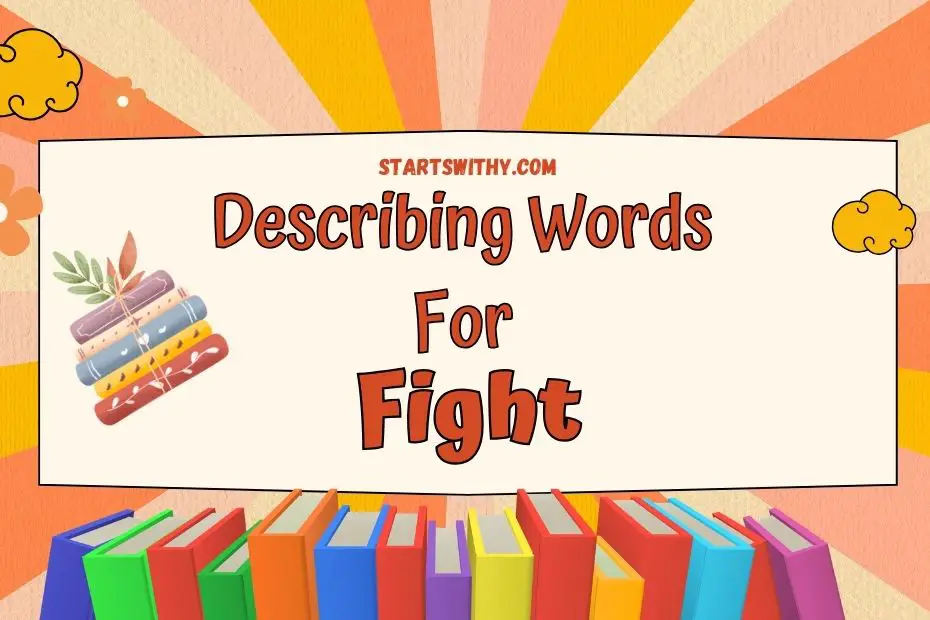
Adjectives for Fight: Examples and Describing Words
When it comes to describing a fight, finding the right… Read More » Adjectives for Fight: Examples and Describing Words
The Greatness of Nature: How to Describe a Thunderstorm
- Category: Environment
- Topic: Rain , Storm
Pages: 2 (697 words)
Views: 11352
- Downloads: -->
--> ⚠️ Remember: This essay was written and uploaded by an--> click here.
Found a great essay sample but want a unique one?
are ready to help you with your essay
You won’t be charged yet!
Spring Essays
Littering Essays
Climate Change Essays
Corn Essays
Beach Essays
Related Essays
We are glad that you like it, but you cannot copy from our website. Just insert your email and this sample will be sent to you.
By clicking “Send”, you agree to our Terms of service and Privacy statement . We will occasionally send you account related emails.
Your essay sample has been sent.
In fact, there is a way to get an original essay! Turn to our writers and order a plagiarism-free paper.
samplius.com uses cookies to offer you the best service possible.By continuing we’ll assume you board with our cookie policy .--> -->